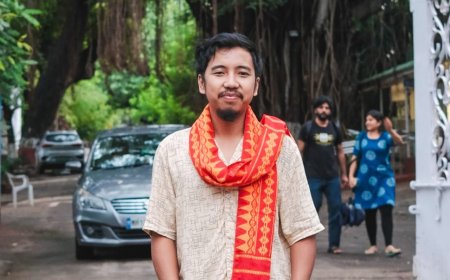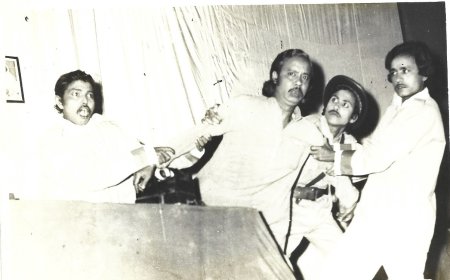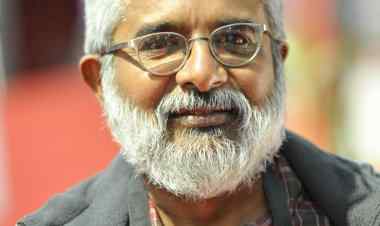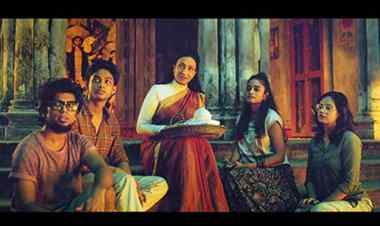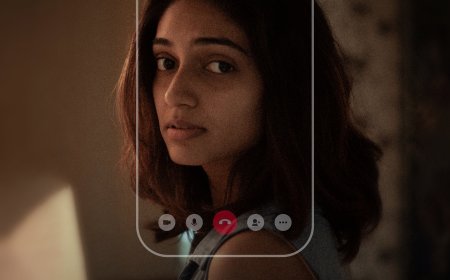In conversation with Utpal Borpujari on his recent outing, Baruar Xongxar
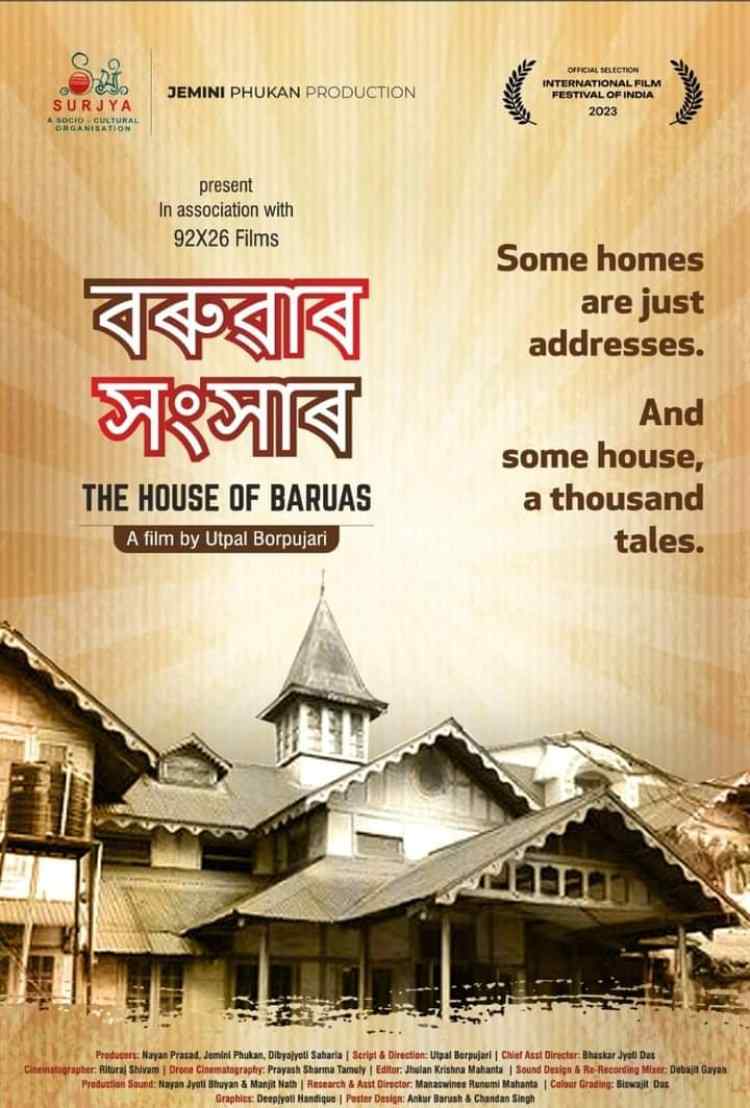
Dipankar Sarkar engages in a discussion with Utpal Borpujari over his current project, titled "Baruar Xongxar."
Through Baruar Xongxar, journalist turned filmmaker Utpal Borpujari pays homage to the Barua family of Lotasil, Guwahati, whose contribution to Assamese art, culture, sports, and even politics is unparalleled. Through interviews with various family members and archival footage, Borpujari explores the rich legacy of the Barua family, shedding light on their significant impact on various aspects of Assamese society. The documentary also delves into the challenges they faced and the sacrifices they made in order to pursue their passions and leave a lasting imprint on Assam's cultural landscape. Borpujari works his way patiently through the narrative and turns the documentary on its head, making it about so much more than just a documentary about a culturally rooted family in Assam.
Baruar Xongxar will have it’s world premiere in the India Panorama section of the 54th International Film Festival of India to be held from 20th - 28th November 2023 in Goa.
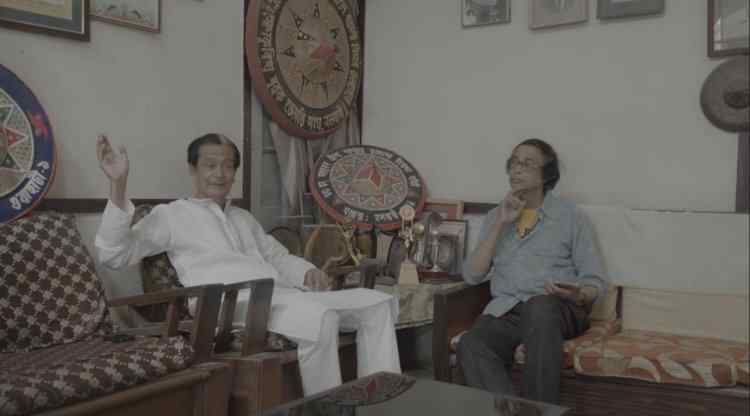
Image: Ramen Barua and Dwipen Barua
Dipankar Sarkar: How had the contributions of the Barua Clan of Latsil, Guwahati, inspired you as a filmmaker to make this documentary?
Utpal Borpujari: As a filmmaker with a journalistic past, I have always felt strongly about the lack of archiving local histories in India as a matter of national interest. All such archiving happens – when they happen – at mostly individual levels. Often, we don’t know the history of the locality, the town, or the city we live in. The aspects of archiving can be many – history, architecture, cuisine, culture, et al. Except in some of the Metro cities, much of the local histories slowly vanish due to lack of documentation and archiving. I was fascinated by a Facebook page started by a conservation architect in Assam to document what are known as “Assam Type” houses, found typically in Assam and the rest of Northeastern India, as well as in the Sylhet area of Bangladesh. The idea was to involve the community by requesting them to share photos of their ancestral houses made in “Assam Type” style. That sparked in me the idea to document the House of Baruas in Guwahati. And what better way than to do it via a film, given that the family’s contribution to Assamese cinema has been immense. As the house completed 100 years this year, this is a tribute to that family – and that house – whose history is not widely known among the current generations.
DS: Why did you decide to begin and end the documentary with film clips?
UB: Since the Barua family is mainly-known for their contribution to Assamese cinema and music, and also because so many from their family had been part of Assamese cinema’s journey over the years, I felt it was appropriate to start and end the film with clips of some of their most iconic films and shots of popular songs. Also, many of the films made by them don’t exist anymore - the prints having been lost or damaged. So, it has been my effort to use clips from the maximum number of films whose prints or even bad copies in digital format still survive, so that they get documented for the future. Incidentally, the print of the 1969 blockbuster Dr Bezbarua, the film that established the commercial potential of Assamese cinema, has been restored a few years ago by the National Film Archive of India, and was screened at the International Film Festival of India in Goa in 2019 as part of a package of films that had completed 50 years that year.
DS: There are several members in the Barua family. How did you select the people for your interviews?
UB: I have interviewed a number of members of the family, who were available in Guwahati, led by, of course, the two surviving brothers Ramen Barua and Dwipen Barua, who are living legends of Assamese music. To narrate the story of the family, I required several viewpoints, which is why I spoke to several other members also, including from the next generation. It’s a large family whose members are now spread in several parts of India and even abroad, so I had to make do with those who were available in Guwahati mostly.
DS: What were your objectives behind using the aerial shots?
UB: The idea behind using the aerial shots, which usually I don’t personally prefer very much, was to give a perspective as to how Guwahati has become a concrete jungle, and also how the Barua family house is now surrounded mostly by multi-storied concrete structures. Also, I used aerial shots to show some other old “Assam Type” houses so that their beauty and the typical slanting roofs get visible in the best way possible.
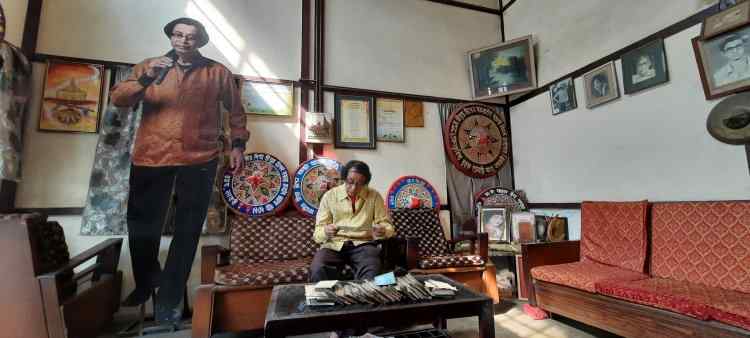
Image: Dwipen Barua
DS: At what stage during the process did you decide to interview the conservation architect?
UB: I was very clear from the beginning that I have to touch upon the history of “Assam Type” architecture to put the Barua family house in that context. That’s why I spoke to conservation architects Arijit Chowdhury and Ranjib Baruah.
DS: Most of the interviews are shot with the camera kept in a static position. But while interviewing Anshuman Barua, the camera is mostly kept handheld. Even in one of the scenes where he moves upstairs inside one of the rooms, it's an uninterrupted shot. How did you make these decisions?
UB: Anshuman, the son of the late Girin Barua and himself a filmmaker, introduces us to the interiors of the house. Everyone marvels at the beautiful design of the house from outside, but hardly anyone has seen its insides. To give an idea of the dimension, design and architecture of the house, I was fortunate to have Anshuman as the raconteur. And I deliberately decided to have his segments with handheld camera so that people can have a dynamic feeling of having a guided tour of the house. On the other hand, while talking about the history of the family, I chose the static viewpoint, especially given the age factor of Ramen Barua and Dwipen Barua, who are in their mid-80s and late 70s respectively, though they don’t look it.
DS: How was the process of editing, and how long did it take you to shape the documentary?
UB: The editing process was very organic, with my Chief assistant director Bhaskar Jyoti Das, himself a very sensitive filmmaker, and editor Jhulan Krishna Mahanta, sitting with me and carefully going through the many hours of footage to slowly structure the film as per the design I had in mind. Since it’s a film about nostalgia and cinematic history as well as the history of a family and a city, the film was designed around these aspects with the effort being to seamlessly move from one aspect to another.
DS. How do you think the current generation can access the films made by the Barua family when film preservation in our nation is in poor condition? For example, the film clip from Ito Sito Bahuto (1963) has poor quality audio, and most of the clips used do not have good resolutions.
UB. That’s the tragedy of Assamese cinema, and of entire Indian cinemas. We have lost so many of our old films because of lack of preservation and archiving. Many of the films made by the family are lost forever, and some exist only in bad-quality digital copies. Luckily a few survive at NFAI as well as the Assam State Film Archive, while some digital copies are with Rajesh More, a film distributor with a passion for saving as many old Assamese films as possible, even if in digital format.
DS: How are you looking forward to the selection of Baruar Xongxar in the Indian Panorama of IFFI 2023?
UB: The subject of the film is a very local one per se, and I and my producers have made it as a tribute to the family that has given so much to Assamese cinema. We often lose out on audio-visual archiving of our cultural and cinematic aspects and don’t have any record about so many people who have contributed so much to our culture. Given its very local focus, I and my producers were clear from the very outset that the film would get good reception within Assam as everyone knows about and loves the family, but also that it might not connect with outside audiences much beyond those who are interested in knowing about the history of various Indian cinemas from the region. In fact, while I have submitted the film to several festivals, I have been least surprised that it has not been selected in any till now perhaps because of this very factor. That’s why selection in Indian Panorama in 54th IFFI was a very pleasant surprise, and I must thank the jury for recognising the Barua family’s contribution to Indian cinema by selecting the film.
DS: What do you expect audience’s takeaway from the documentary?
UB: I feel that audiences would marvel that one single family can have so many talents in so many diverse fields, which is perhaps unique in the entire of India. Can you name any other family that has several top film directors, actors, musicians, singers, two Ranji Trophy-level cricketers, one Santosh Trophy-level footballer, one very popular radio broadcaster, and one entrepreneur-turned-politician?
***
What's Your Reaction?




































